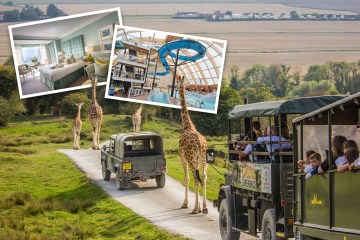UK’s best budget campsite is on the edge of a national park
THE UK’S best budget campsite has been named and it has tonnes of amazing features as well as a great price.
Named in the Campsites.co.uk Camping and Glamping Awards, Caldbeck Camping in Cumbria can be found in the Northern Lake District, not too far from the northerly fells of High Pike and Carrock Fell.
In total, the campsite features 13 grass pitches, three of which have electric hook-ups.
But if putting up a tent isn’t your thing, then you can always opt for the cosy bell tent that is on site as well.
Inside the adult-only bell tent, visitors will find a cosy double bed, electrical supply, tea and coffee making facilities and a table and chairs.
Outside the tent there is also a private garden with a fire pit, seating and a sheltered bench area.
Read more on travel inspo
Those staying in the bell tent also have access to a private toilet.
The campsite, which also featured on Campsites.co.uk 2025 Outstanding Sites list, is directly on the Cumbrian Way footpath, making it the ideal spot for keen hikers.
Barbecues are allowed at the site, as long as they are raised from the ground – an ideal summer evening activity.
Alternatively, there are fire pits which are available to hire.
And your four-legged friend is welcome too.
One recent visitor said: “Beautiful lake running through camp, space for wild swimming at bottom.
“Fire pits on each pitch, pitches are of a very good size!
“The site was very peaceful with little to no noise in the evenings.
“Host was lovely and friendly. Would definitely return.”
If you want a tipple before settling down for the night, The Oddfellow Arms pub is just a five-minute walk away.
And there are plenty of things to do nearby including Aira Force Waterfall which is just 30 minutes away.
The staggering 20 metre waterfall is located in an 18th century pleasure ground and there are a number of woodland trails to explore.
You might even catch a glimpse of rare red squirrel.
And Dalemain Mansion and Historic Gardens is 30 minutes away too.
Here, you can explore a pretty Grade I listed country house that features a mix of medieval, Tudor and Georgian architecture.
The gardens are also award-winning.
Spread across five acres, visitors can explore a number of plants and flowers and the gardens are known for whimsical features, so keep an eye out for a dragon and a sleeping earth giant.
Pitches at the campsite for adults cost from £9 per night and kids, £5 per night.
If you wish to have a pitch with an electrical hookup, it is an additional £6 per night.
For the bell tent, it costs from £65 per night for stays between Sunday and Thursday or £75 per night for stays between Friday and Saturday.
There is also a two night minimum stay in the bell tent.
For more camping inspiration, there are a number of stunning campsites in Britain from £10 a night – including a posh estate with a brewery next to woodland theme park.
Plus, Kent’s best campsite has its own private beach and 3,000 acres that feels like the savannah.









